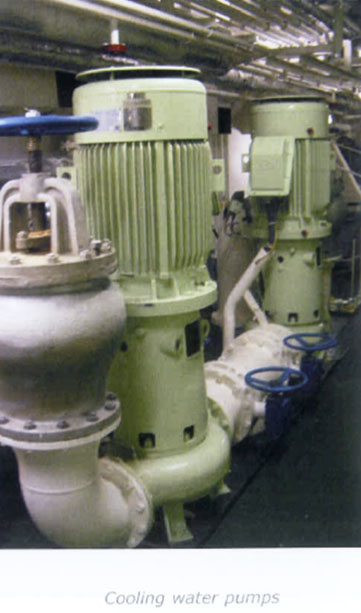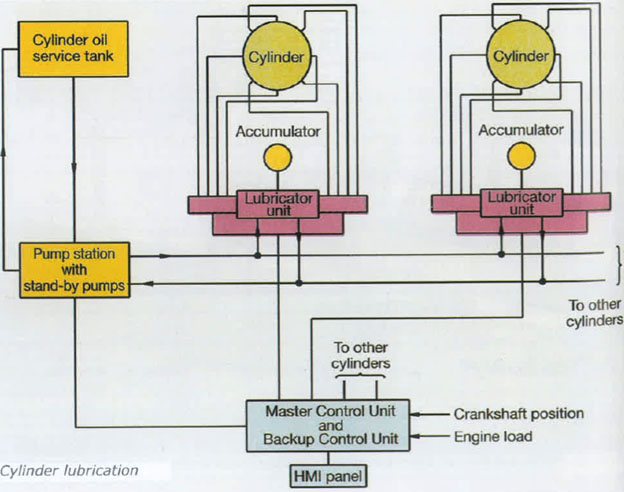Cooling and lubrication systems on ships
Cooling and lubrication systems on ships

Cooling system
All internal combustion engines, including diesel ones, emit heat during their work. Some of this heat is carried away with combustion products, the rest heats up the engine. So that it does not lose its performance due to overheating, different cooling methods are used.
Air cooling is very limited in terms of the amount of heat removed and therefore can only be used in low-power engines. In ship power plants, water cooling is used (which is quite reasonable - there is water everywhere). It can be:
- open type - seawater passes through the filter into the engine, cools it and is discharged back. Only suitable for small boats due to the problems caused by hot seawater - corrosion, deposits, fouling, etc .;
- closed loop - when the same water with corrosion inhibitors protecting the engine metal is circulated in a closed loop, cooling the engine and then cooling in a heat exchanger outside the engine. This heat exchanger already uses filtered seawater: either it is installed in a special tank with natural circulation of seawater, or it is supplied by special pumps.
The heat exchanger, pump, filter are duplicated with all the necessary valves for switching between two parallel systems so that maintenance and cleaning of the equipment can be carried out. This has to be done regularly, especially in the tropics, where fouling is the main problem.
Lubrication system.
As with cooling, every engine needs lubrication. All sleeve bearings on the crankshaft, each piston moving in its own cylinder, connecting rods, valves, injectors - they are very sensitive to lubrication. Violation of its supply, even for a short time, can damage the engine and then require expensive repairs. Therefore, the oiler is the most important tool for the mechanics, they always go with it.
The main unit of the lubrication system is the oil pump . For small motors it is built into the motor, for large motors it is located separately. The oil is pumped into the engine through the filter. Each bearing, each lubricated unit has its own oil supply channel.

Used oil flows into the sump and accumulates there. Then it passes through the oil cooler, is cooled, filtered and fed back to the engine. Engine oil, in addition to lubrication, also performs a certain cooling function, especially for pistons.
Oil filtration quality is critical to the performance of the entire engine. In large engines, this can be a whole filter system, including an oil separator and a microfilter with a built-in self-cleaning (back-flushing) system. As well as for cooling, all elements of the lubrication system are duplicated so that filters can be changed without stopping the main engine.
Small engines have replaceable filters that need to be changed after a certain number of operating hours.
The oil pump is usually a screw or gear type, they provide constant pressure in the system.
If the oil pump is driven by the engine itself, there is one problem. At the time of starting, the engine must already be lubricated! For this, standby or prestarting oil pumps are intended.
Some engines use separate pumps to lubricate the valves and cylinders.
Cylinder lubrication has been improved similar to the Common Rail system, using oil flow control based on engine load. This reduces the oil consumption for cylinder lubrication. The oil can be injected under pressure at just the right moment to form a film between the piston and cylinder.
Cooling and lubrication systems are critical to the engine, so a lot of attention is paid to ensuring their smooth operation.
 +7 (812) 4-673-673
+7 (812) 4-673-673